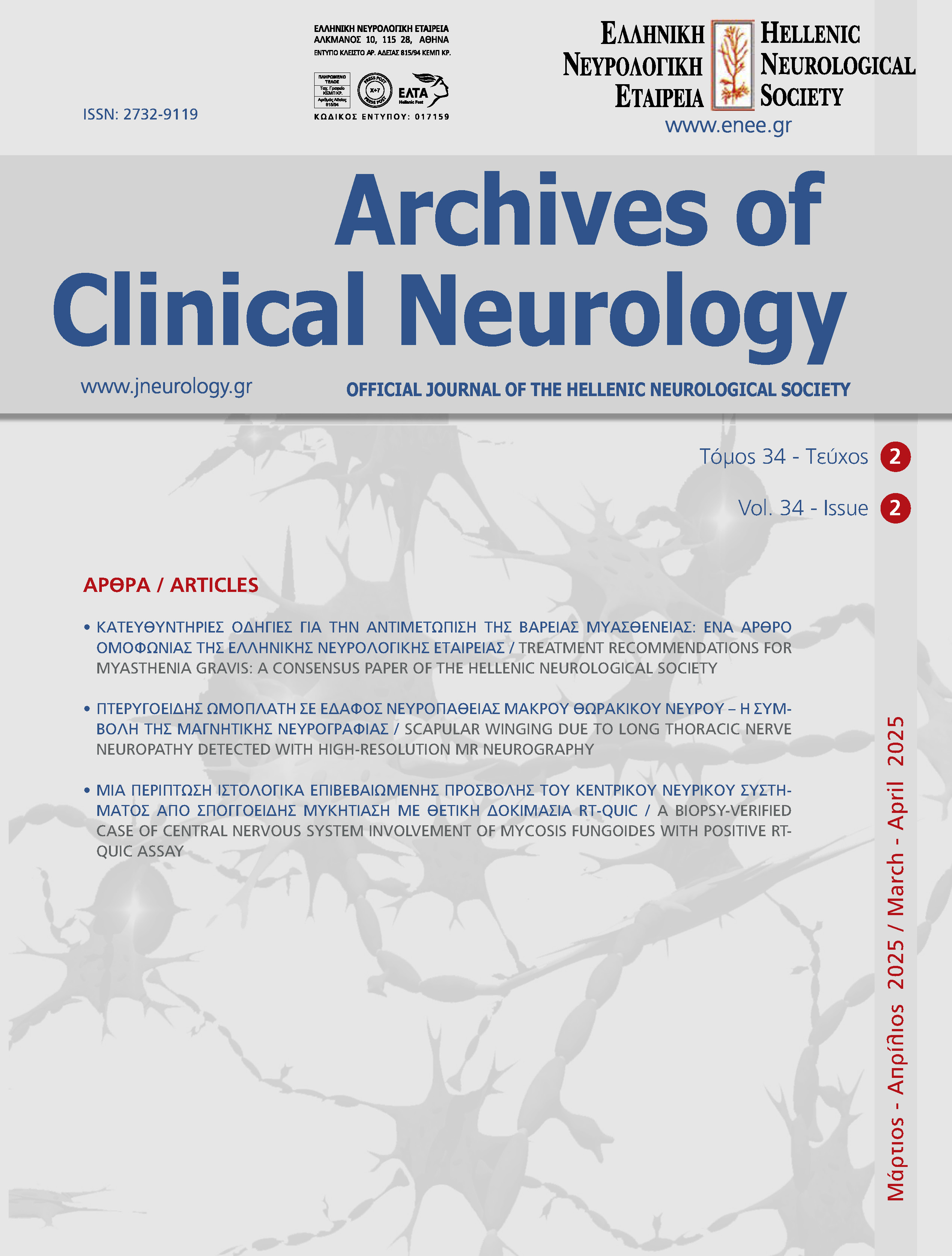TREATMENT RECOMMENDATIONS FOR MYASTHENIA GRAVIS: A CONSENSUS PAPER OF THE HELLENIC NEUROLOGICAL SOCIETY
Keywords:
myasthenia gravis, clinical scales, immunotherapy, new drugs, drugs adverse effects, thymus, auto-antibodies, MG in pregnancy, myasthenic crisis, treatment guidelines, consensus, GreeceAbstract
Given the recent development in the therapeutics of myasthenia gravis (MG), the Hellenic Neurological Society sought to present the available treatment options to achieve the goals as they have been set in the present era in a consensus document.
The authors of this article, all experienced in treating MG patients, prepared a guide for MG treatment strategies as has been modified recently and discuss the effectiveness and adverse reactions of the available drugs in Greece including those of the new categories that have been approved by European Medicines Agency. The information provided was based on a critical review of the recent literature mainly including articles on international and other countries' guidelines and expressing personal views.
A definite diagnosis of MG and subtyping according to the MG Foundation of America (MGFA) classification, immunological profile, thymus pathology, or co-existing other medical conditions should precede treatment. When choosing a treatment approach, a balance should be kept between drug effectiveness i.e. successfully managing acute symptoms and sustaining remission and drug burden, including adverse effects and patient’s discomfort. Response to treatment is better quantified using structured clinical scales and a commonly agreed definition of deterioration on one side and the optimum post-intervention status on the other.
No uniform treatment regimen exists to be recommended for all patients with MG. However, there are general rules for induction and long-term treatment, which should then be individualized based on clinical symptoms, disease severity, and patient’s age, and after careful consideration of each patient's requirements in social and professional life. Steroids remain the first-line treatment for the majority of MG patients, followed by azathioprine and alternatively other immunosuppressive medications that serve to lower the dose or replace steroids. For patients with MuSK-positive antibodies, rituximab is particularly effective. Novel immunomodulatory, fast-acting drugs (i.e. complement C5 inhibitors and FcRn blockers) can be added to various therapeutic regimens, on an individual basis to improve the outcome. The impending and established myasthenic crisis requires emergency treatment with plasmapheresis or IVIG. We expect this first attempt to codify MG therapy recommendations to be helpful for clinical practice and form the basis for future revisions upon fruitful criticism.


